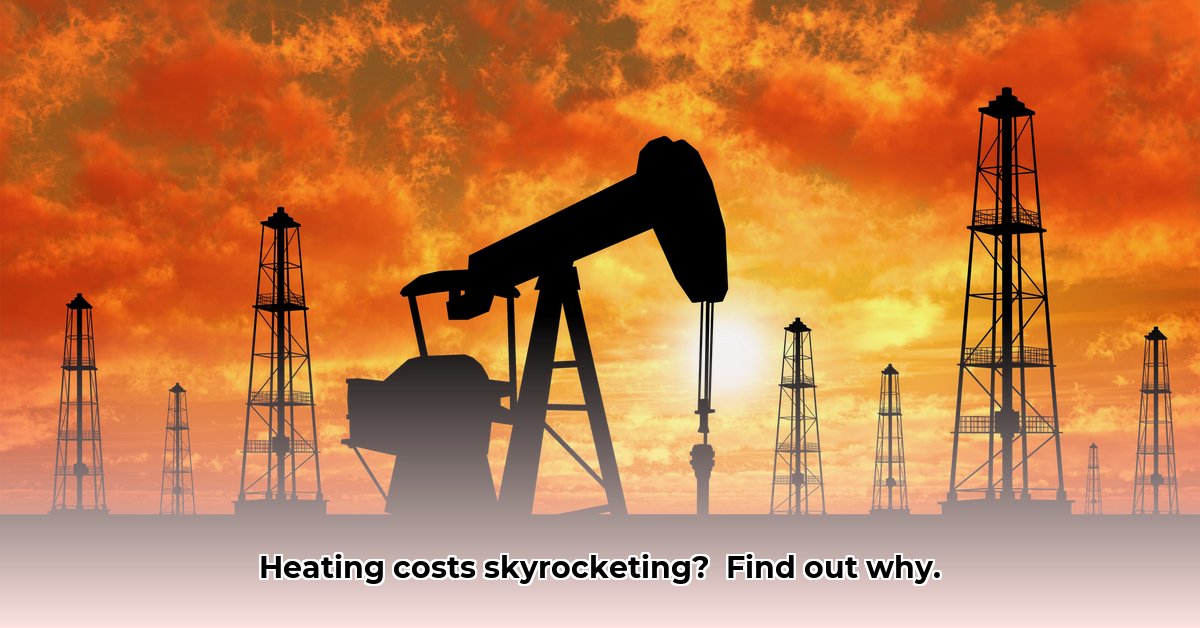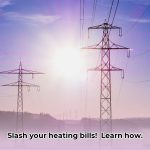Are you considering oil heat for your home? This comprehensive guide provides clear, up-to-date information on oil furnaces in 2025. Covering costs, maintenance, energy-saving models, and government policies, it helps you make informed decisions. Discover the advantages and disadvantages of oil heat, compare it to other options, and learn how to optimize your system for efficiency, savings, and environmental responsibility. For current fuel prices, check out this helpful resource on heating oil costs.
Understanding Oil-Fired Heating Systems in 2025
For many homeowners, oil-fired heating systems have been a reliable source of warmth for decades. However, rising energy costs, environmental concerns, and technological advancements require a fresh look at these systems in 2025. This guide provides a detailed exploration of oil heat, helping you determine if it remains the right choice for your home.
How Oil Furnaces Work: A Deep Dive into the Technology
Oil furnaces generate heat by burning fuel oil, similar to a controlled combustion process. The furnace uses a burner to atomize the oil, turning it into a fine mist that mixes with air. This mixture ignites, producing hot gases that pass through a heat exchanger. The heat exchanger transfers the heat to the air circulating in your home via ductwork.
High-efficiency models incorporate advanced designs and components to maximize heat extraction from the fuel, reducing waste and lowering heating bills. Key components include the burner, heat exchanger, blower, and a sophisticated control system.
The Pros and Cons: Weighing the Advantages and Disadvantages of Oil Furnaces
Here’s a balanced view of the pros and cons of oil furnaces:
Pros:
- Reliable Heating: Oil furnaces are known for their reliability, particularly in regions with harsh winters where other systems may struggle. A properly maintained system can provide consistent warmth even during power outages (when connected to a generator for power).
- Fast Heating: Oil furnaces heat up quickly, providing rapid warmth on demand.
- Long Lifespan: With proper maintenance, oil furnaces can last for 15-30 years, offering a long-term heating solution.
Cons:
- Fuel Price Volatility: The price of heating oil can fluctuate significantly, affecting annual heating costs.
- Environmental Impact: Burning oil produces greenhouse gas emissions, contributing to climate change.
- Maintenance Requirements: Regular servicing is essential for efficient and safe operation.
- Fuel Storage: Oil furnaces require a storage tank, which can take up space and may require periodic inspection or replacement.
The Cost Factor: A Detailed Analysis of Oil Heating Expenses
Understanding the costs associated with oil furnaces is essential for budgeting and planning. Consider the following factors:
- Installation Costs: Expect to pay between $2,500 and $6,000 or more for a new, high-efficiency system, including the furnace, installation labor, and potential oil tank replacement.
- Annual Maintenance: Budget $150 to $500 annually for professional maintenance, ensuring efficiency and safety.
- Fuel Costs: Fuel expenses vary based on home size, insulation, climate, oil prices, and furnace efficiency.
Here’s a cost summary table:
| Item | Cost Range | Factors Influencing Cost |
|---|---|---|
| Installation | $2,500 – $6,000+ | Furnace type, home size, installer fees, tank replacement (if needed) |
| Annual Maintenance | $150 – $500 | Service contract terms, system complexity, geographic location |
| Monthly Fuel | Highly Variable | Home size, insulation, climate, oil price, furnace efficiency, thermostat settings |
| Oil Tank Replacement (every 15-30 years) | $1,000 – $3,000 | Tank material, size, accessibility, and local regulations |
Oil vs. Other Options: Which Heating System is Right for You?
Consider these alternatives to oil furnaces:
- Natural Gas Furnaces: Common in areas with natural gas infrastructure, offering potentially lower fuel costs and higher efficiency.
- Heat Pumps: Provide energy-efficient heating and cooling, particularly in moderate climates.
- Electric Furnaces: Offer a clean energy source but can be expensive to operate in areas with high electricity costs.
- Propane Furnaces: An alternative for locations without natural gas access.
The optimal choice depends on your location, budget, and climate.
Government Policies and the Future of Oil Heat: Navigating Regulations
Government regulations are increasingly focused on promoting cleaner energy sources, potentially impacting the future of oil heating. Expect stricter emission standards and incentives to switch to cleaner options like heat pumps or solar heating.
Check local and state government websites for rebates or incentives to upgrade to more environmentally friendly heating systems.
Optimizing Your Oil Heating System: Smart Tips for Efficiency and Savings
Follow these steps to maximize efficiency and savings:
- Hire a Qualified Installer: Choose a licensed and insured professional experienced with oil furnaces.
- Schedule Regular Maintenance: Annual inspections and tune-ups are crucial.
- Upgrade to a High-Efficiency Model: Replace older, less efficient furnaces with modern, high-efficiency models.
- Insulate Your Home: Proper insulation minimizes heat loss, reducing fuel consumption.
- Use a Programmable Thermostat: Set temperature schedules to optimize energy usage.
- Explore Alternative Fuels: Investigate the use of biofuels like Hydrogenated Vegetable Oil (HVO), if available in your area. Consult with a qualified technician to determine compatibility.
- Consider a Smart Thermostat: Smart thermostats learn your heating patterns and adjust automatically for maximum energy savings.
Looking Ahead: Innovations and Environmental Considerations
The future of oil-fired heating systems includes ongoing advancements in efficiency, emission reduction, and alternative fuels like HVO. Stay informed about technological developments, government policies, and fuel availability.
The Informed Homeowner’s Guide to Sustainable Heating Choices
Key Takeaways:
- Local climate and fuel costs are critical factors when choosing a heating system.
- Government regulations (IECC, IRC) significantly influence system choices and installations.
- Oil-fired boilers require specialized knowledge and strict adherence to safety codes.
- Heat pumps offer energy efficiency in moderate climates, while oil and gas furnaces excel in colder regions.
- A thorough cost analysis is crucial for long-term planning.
Ensuring the Best Heating System for Your Home
Oil furnaces remain a practical choice for many homes, especially in colder climates where reliable, rapid heating is essential. However, volatile fuel prices and environmental concerns have many homeowners seeking alternatives.
Oil furnaces heat air via combustion, distributing it throughout your home via ductwork. High-efficiency models maximize energy extraction, improving their AFUE rating.
The Upsides and Downsides
| Pros | Cons |
|---|---|
| Reliable heat output | Higher upfront costs |
| Rapid heating in cold climates | Fuel price volatility |
| Relatively simple maintenance (some models) | Environmental concerns (emissions) |
| Established technology | Requires specialized installation and maintenance |
Sustainable Heating Investments
Consider these cost factors:
- Initial furnace price (efficiency and brand dependent).
- Professional installation costs (vital for oil systems).
- Annual maintenance expenses (inspections and cleaning).
- Fuel costs (highly variable).
Compared to options like natural gas or heat pumps, oil heating can seem costlier initially. However, long-term costs depend on unit efficiency and regional fuel prices.
Comparing Home Heating System Options
Heat pumps are gaining popularity due to their energy efficiency in milder climates. However, they may be less effective than oil furnaces or gas furnaces in extremely cold regions. Consider your climate zone when making your decision.
- Unlock Your Future: Community Colleges in Florida with Childhood Education Programs – Your Affordable Path - September 14, 2025
- Unlock Futures: Catawba College Growth Strategy Insights 2025 - September 14, 2025
- Your Complete Guide to Eastfield Community College | 2025 Programs & Insights - September 14, 2025



![Fast Track Your Legal Career: Broome Community College Paralegal Studies AAS [2025 Guide] broome_community_college_paralegal_studies_edited](https://baufinanzierung-ausland.de/wp-content/uploads/2025/08/broome_community_college_paralegal_studies_edited-150x150.jpg)












